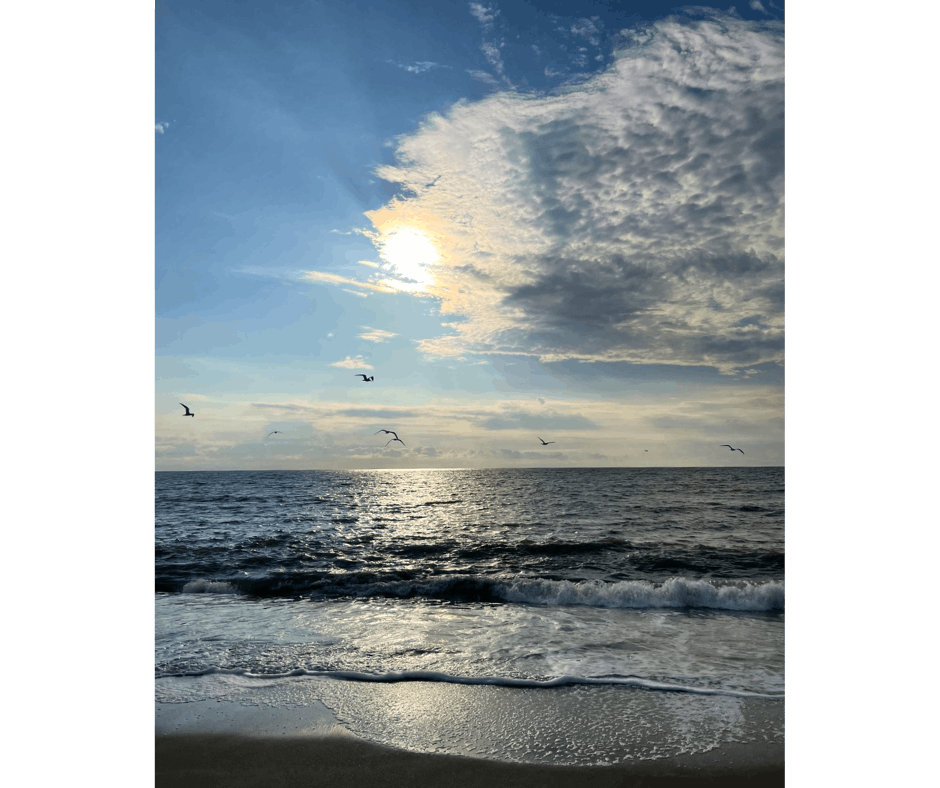There’s one thing we can all agree on: the thing which we seem to never have enough and wish we had more of… time. Balancing life’s activities, whether it’s working, traveling or giving back to your community, can get overwhelming. No matter how much time you carve out for all your individual goals, something always ends up getting the short end of the stick.
My question is, who said life’s activities had to be separated?
An Unscheduled Excursion
I spent a large part of my childhood living just outside of Charleston, South Carolina. Having grown up in The Lowcounty, I have a deep appreciation for the beautiful culture, architecture and history, among many other aspects, the city represents. Whether I’m listening to jazz while watching the sunset on the rooftop of a local tavern or diving into the warm waves and burying my toes in the soft sand at Folly Beach, I know I can always count on seeing my family as an excuse to sneak in a mini-vacation.
While at home recently, I thoroughly enjoyed connecting with my family and shopping in the Charleston City Market, but to my surprise, the highlight of the trip was my time just 40-minute outside the heart of Downtown Charleston at a hidden gem: Cape Romain National Wildlife Refuge. This Refuge, seated beside Francis Marion National Forest along the coast of South Carolina, is a dreamy array of salt marshes, barrier islands and the waterways that blend them together.
Stepping out onto Lighthouse Island, the soothing sounds of the waves racing each other as they crashed ashore immediately greeted me. I gazed out over the long, brown, shell freckled beach and was hypnotized by its elegance while the salty wind gently exfoliated my skin. This place is mesmerizing.
This landscape is known as key habitat for many threatened and endangered animals including a migratory shorebird called the red knot, as well as horseshoe crabs, which the red knots depend on as a source of food. It is also home to the largest nesting site for the northern population of loggerhead sea turtles, coming in second only to Florida for the largest nesting site in the world. To collect and maintain data about the population and nesting activity within the refuge, a crew of refuge specialists, interns and volunteers survey Cape, Lighthouse and Bulls Islands everyday throughout the nesting season.
Originally, I had planned to find a trail and casually tour the refuge myself. To fully immerse myself in the experience and learn more about the importance of this landscape, however, I decided to volunteer with the loggerhead sea turtle nesting site survey crew.
Turtle Time: A Volunteer Experience
Just as the sun was starting to peak over the marshlands and stretch its rays across the sky, I met the survey crew at the dock to prepare for our 20-minute boat ride to Cape Island. Patches of sweetgrass and salt water danced as they took turns painting the foreground for as far as the eye could see as we sailed across the water to the refuge’s northernmost island.
We then rode ATVs right through the island’s center to the side of the island that shakes hands with the Atlantic Ocean. After we reached the beach, we traveled parallel to the water and started our surveying mission at the farthest end of the island.
First, we needed to observe which nests hatched since the last survey and mark them with a yellow ribbon. All the nests found in the refuge are tagged with a pole with a number on it. The number correlates to the chronological order in which they were found, and the pole allows us to easily locate found nests while surveying.
We could tell a nest has hatched if the sand’s surface is subtly sunken in and if there are turtle hatchling tracks leading away from the nest. The greatest challenge was differentiating between a hatched nest and one that had been visited by predators. Once the hatched nests are determined and the ribbons are tied, we leave them until the nests have completed 70 days total on the beach.
The refuge volunteers wait until the nests are 70 days old before digging them up to record clutch size data. To do this, we gently gnarled our fingers through the sand, feeling for soft spots and scooping excess sand out of the hole. When we dug deep enough, we laid on our stomachs and extended our arms further down into the nest and continued lightly sifting until we felt eggshells. One person piles up all the hatched and unhatched eggs on the surface, while another counts and sorts the eggs. The ratio of hatched eggs to unhatched is what the refuge uses to determine the clutch size.
While the entire process was very engaging and exciting, my favorite moments were the tiny baby sea turtle surprises! During the survey, I learned sometimes hatchlings will get trapped down in the nest. While collecting clutch size data, it’s common to dig up a hatchling here or there!
Save Time and the Planet
Collecting and maintaining data on imperiled animals, like loggerhead sea turtles, is a major task. Wildlife refuges aren’t always equipped with the number of staff necessary, but you can help! Cape Romain and many other NWRs have plenty of volunteer opportunities to explore.
While giving back, you will also gain more knowledge about the significance of this ecosystem through hands-on participation. So, the next time you go on vacation, find a nearby refuge too and see what opportunities await!










